Barbara Dyer: The demise of a Camden-built vessel
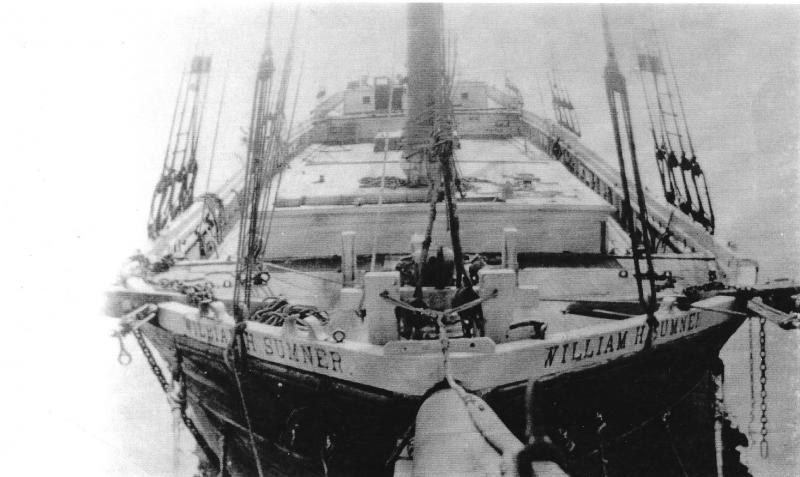 The three-masted William H. Sumner, built in Camden, ran aground in North Carolina, her captain dead. (Photo courtesy Barbara F. Dyer)
The three-masted William H. Sumner, built in Camden, ran aground in North Carolina, her captain dead. (Photo courtesy Barbara F. Dyer)
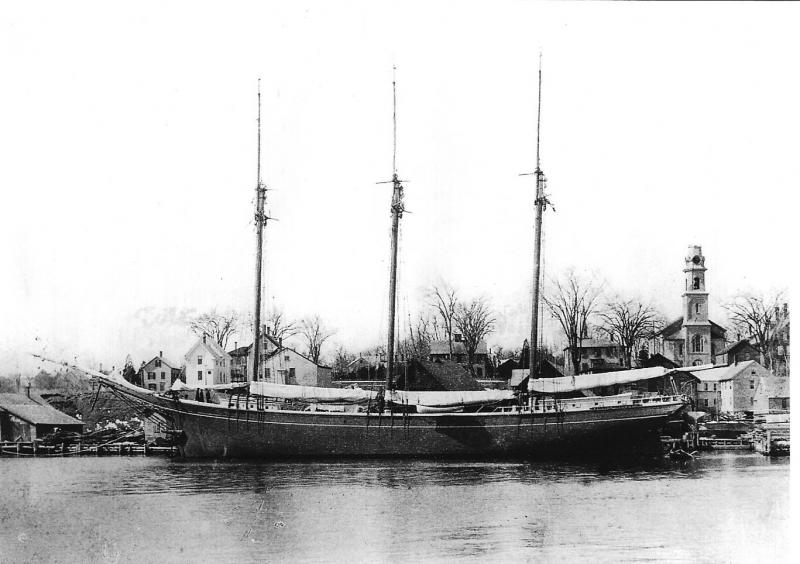 The three-masted William H. Sumner is launched in Camden Harbor, in 1891. (Photo courtesy Barbara F. Dyer)
The three-masted William H. Sumner is launched in Camden Harbor, in 1891. (Photo courtesy Barbara F. Dyer)
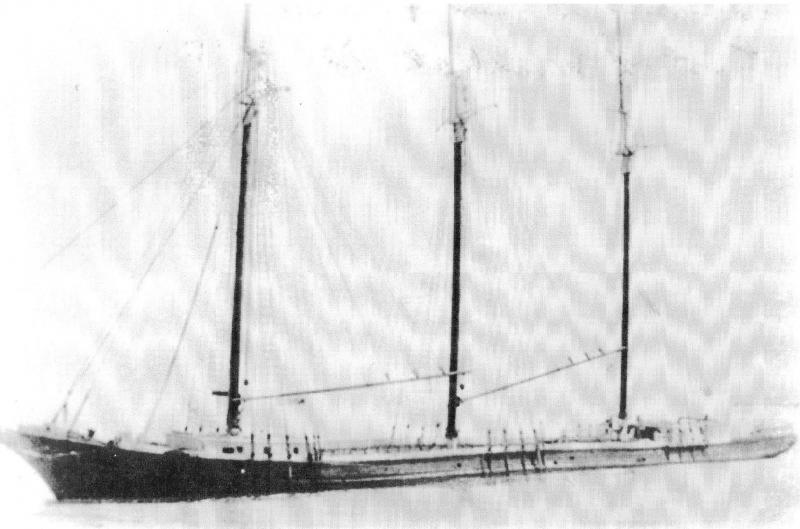 The William H. Sumner. (Photo courtesy Barbara F. Dyer)
The William H. Sumner. (Photo courtesy Barbara F. Dyer)
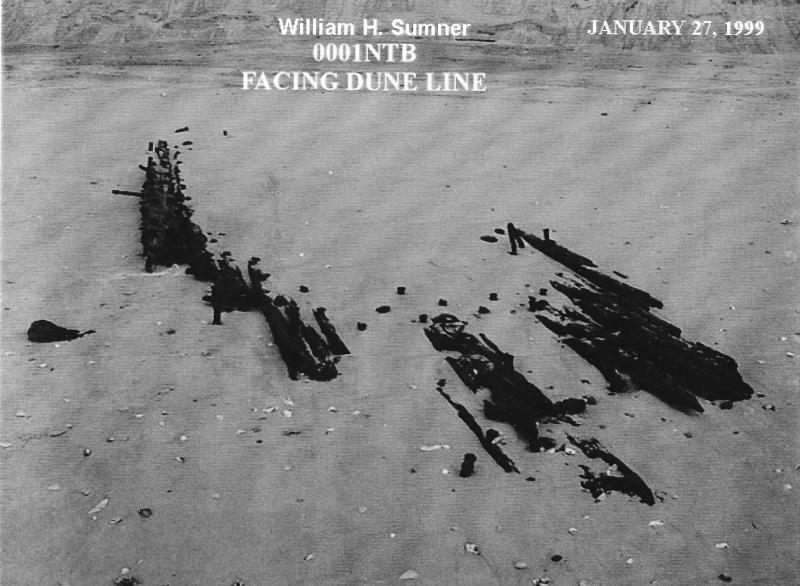 The wreck of the William H. Sumner, off of North Carolina. (Photo courtesy Barbara F. Dyer)
The wreck of the William H. Sumner, off of North Carolina. (Photo courtesy Barbara F. Dyer)
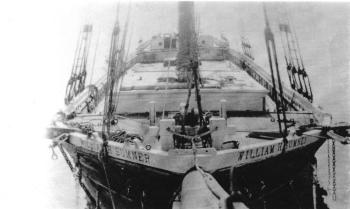 The three-masted William H. Sumner, built in Camden, ran aground in North Carolina, her captain dead. (Photo courtesy Barbara F. Dyer)
The three-masted William H. Sumner, built in Camden, ran aground in North Carolina, her captain dead. (Photo courtesy Barbara F. Dyer)
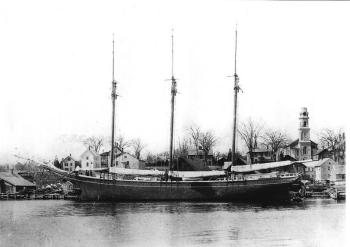 The three-masted William H. Sumner is launched in Camden Harbor, in 1891. (Photo courtesy Barbara F. Dyer)
The three-masted William H. Sumner is launched in Camden Harbor, in 1891. (Photo courtesy Barbara F. Dyer)
 The William H. Sumner. (Photo courtesy Barbara F. Dyer)
The William H. Sumner. (Photo courtesy Barbara F. Dyer)
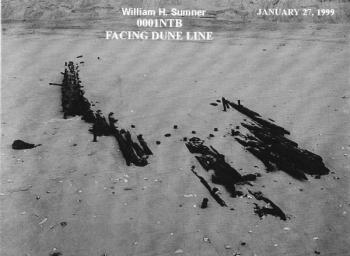 The wreck of the William H. Sumner, off of North Carolina. (Photo courtesy Barbara F. Dyer)
The wreck of the William H. Sumner, off of North Carolina. (Photo courtesy Barbara F. Dyer)
Vessels were built by people investing in them by shares, like one-sixth, one-32, one-quarter, one-eighth. If the vessel operated 20 years or more there were profits to be made; however, many met their demise much sooner due to many factors. So it was uncertain, much like investing in the stock market today.
The earliest Camden built one that I know about was the William H. Sumner, a three-masted schooner that was launched from the yard of Isaac Coombs and Co., March 14, 1891. She was registered at 489 net tons, and measured 165 feet in length with a 35 foot beam.
That one was a Puerto Rican-owned ship, chartered for the phosphate trade. On Sunday, Sept. 7, 1919, bound from San Juan for her home port in New York, she carried 850 tons of phosphate, as well as 56 mahogany logs and 30 tons of iron wood.
According to the first mate, Charles Lacey, they had gotten off course and sailed too close to shore. The skipper had planned to tack back out to sea at 8 p.m., but by that time the winds had died and the currents sent the vessel toward the shoals of Topsail Inlet.
The ship ran aground and was beached on a sand bar, with eight feet of water in her hold. The Captain Robert E. Cochrane was now dead by his own hand, having shot himself at 6 a.m., “in a fit of despondency.”
That wasn’t the end of the story. Some of the shipmates said Lacey was telling the truth, while others said he was lying.
The captain had no gun powder residue on his hands and the Wilmingham Morning Star reported two days later, “Murder of the High Seas.”
The boat split in two.
They started an investigation and it didn’t seem possible that the captain could or would have shot himself. Lacey had entered the captain’s cabin shortly before his death and had twice tried to kill a captain and had a shooting match with a native.
The trial continued with conflicting stories and the jury deliberated for 26 hours, but failed to agree. They later had another trial and in 10 minutes, whatever the reason, determined Lacey not guilty.
How could I know so much about this whole episode?
Well, Camden got a call from the North Carolina Underwater Archaeology Unit, which had received information that the structural remains of a shipwreck had become uncovered on North Topsail Beach.
The UAU visited the site. The timbers were 10 inches in width and massive iron pins were used to fasten them. They could tell much by the pieces. Tamarack (wood) was used and that wood grows only in the far north. According to their files the William H. Sumner was most likely source of this hull section, and she went aground off there in the summer of 1919.
I was called by the Camden Public Library for information on her launching, which gave all the specific details of its building and it was built for rough usage. The pieces of the wreck have been tagged, thus ending our saga.
If you find this fascinating, I could “dig up a couple more shipwrecks of Camden built vessels.
Barbara F. Dyer has lived in Camden all of her life, so far.
More Barbara Dyer
Camden’s wooden boat builders were perfectionists
Building wooden boats in Camden, many years ago
Socializing and such, before television
The first years of the Camden Snow Bowl
The many moods of Camden Harbor
Demise of the Camden steamboat wharf
Curtis Island Lighthouse - the sentinel of Camden Harbor
Camden Harbor: As old as the last glacier
Event Date
Address
United States































